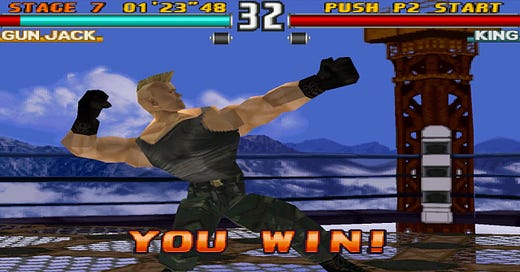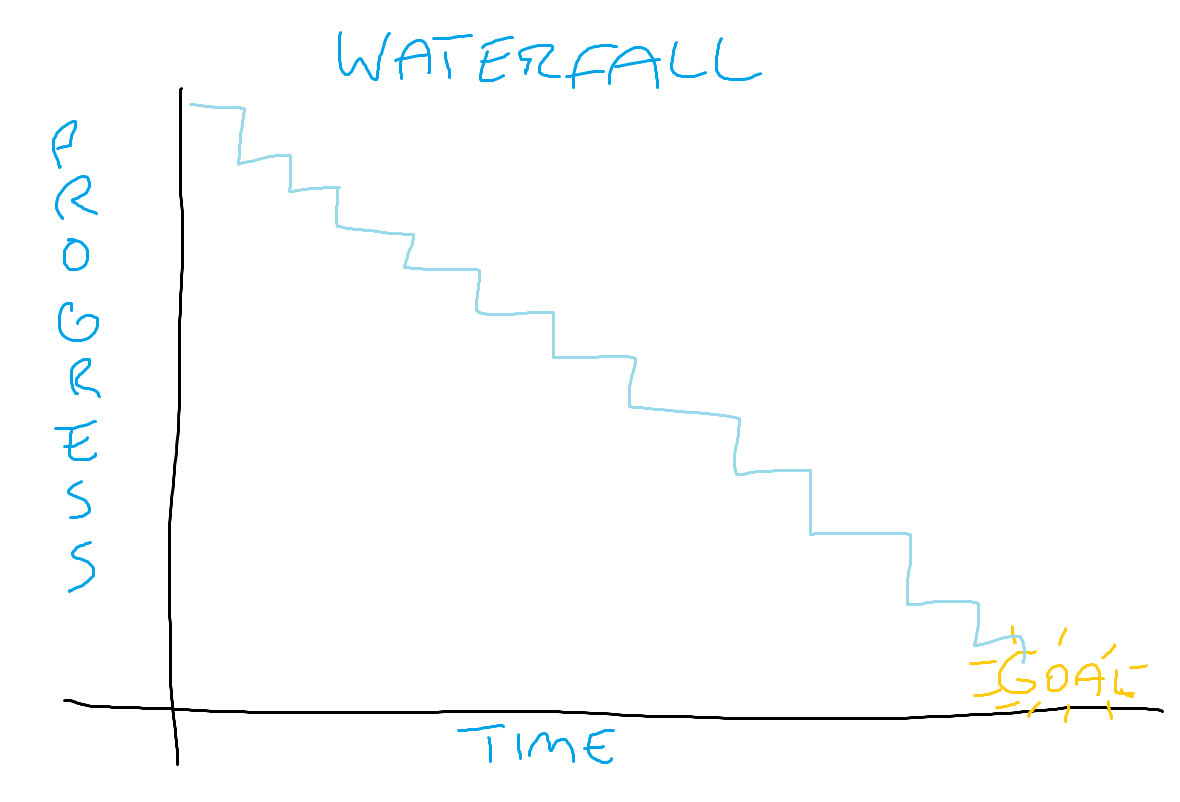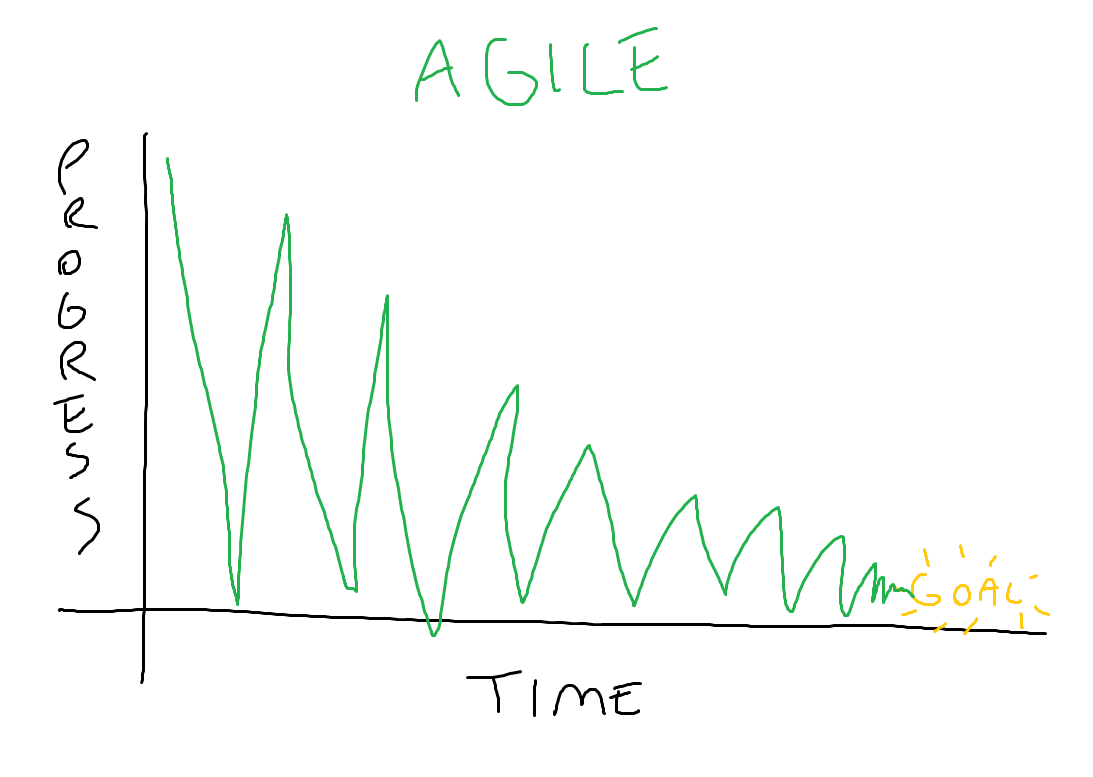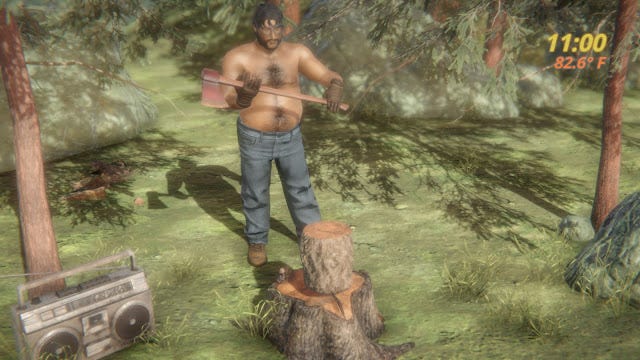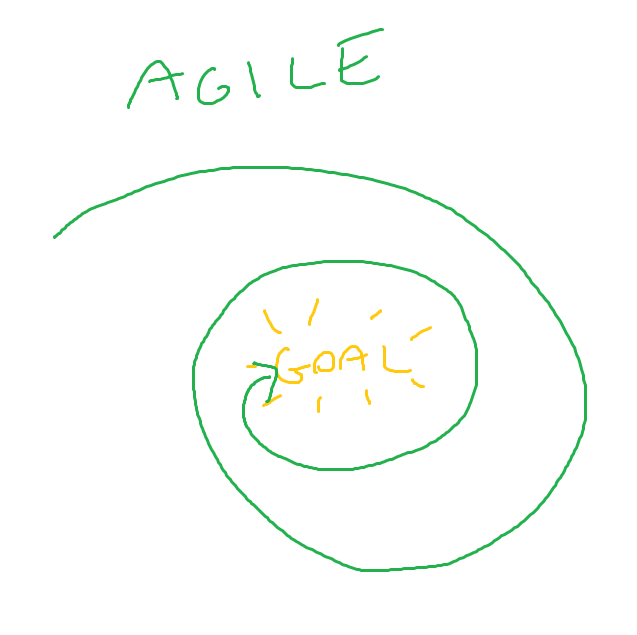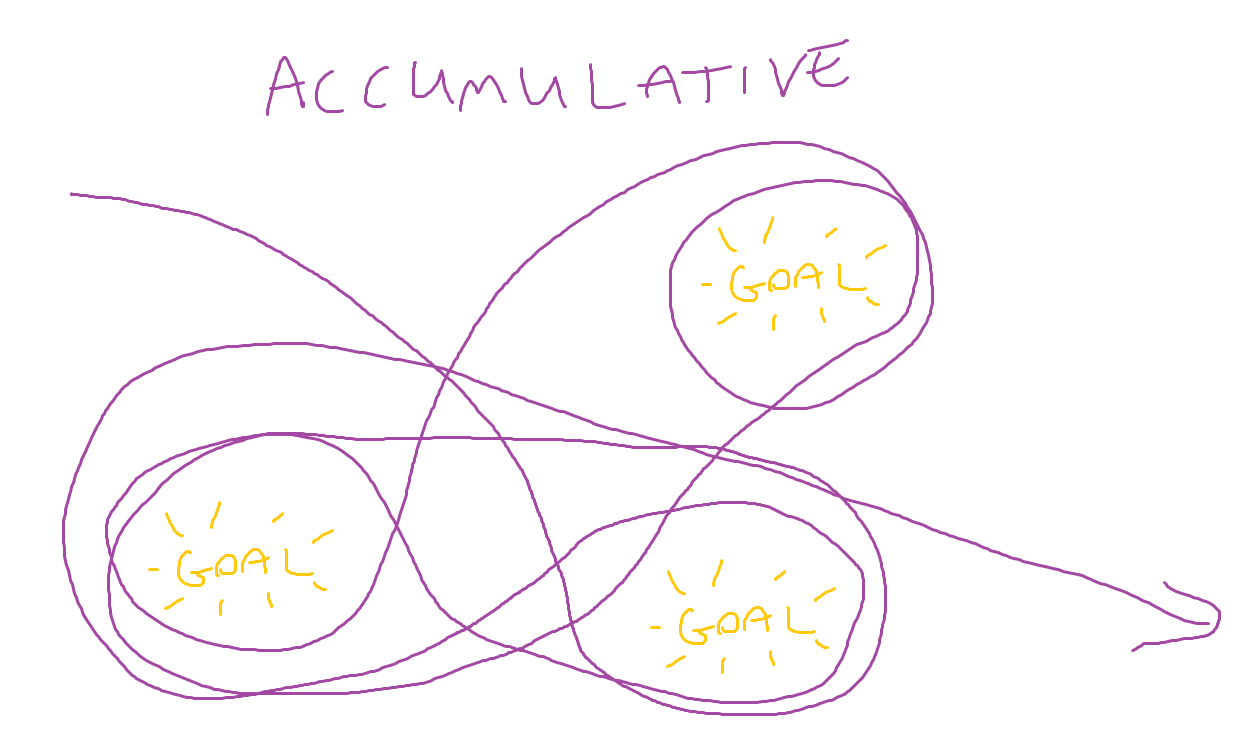If we thought of videogames as bodies, most would be bodybuilders. They are strong, heavy, and visually impressive. They're hot. They stoke male power fantasies. They're almost impossible to create, let alone maintain, and they warp our perceptions of what we are capable of as individuals. Don't read this as me saying either bodybuilding or videogames are bad, I'd be lying if I did, but I think there's an important connection to be made between videogame production and our relationship to muscle and fat.
FIT
A dominant method for videogame and software design is called Agile. In this philosophy, a product idea is reduced down to an MVP feature, or minimal viable product. The MVP is the core reason the idea is valuable and interesting. Development proceeds in short sprints of one to two weeks where all of the workers are given specific tasks to complete. As the product grows, it is constantly evaluated against the MVP-- are all the sprint tasks working toward that goal or are they getting distracted by extraneous features? Since nobody has unlimited time or budget the excess fat has to be trimmed.
Agile methodology is figured in contrast to the waterfall method that comes from architecture. In this scheme, a project moves linearly from concept to construction. After all, once concrete is laid and walls put up it becomes exponentially more difficult to make changes. But software doesn't have this limitation. While major changes might be complicated, altering code is significantly easier than altering physical structures.
Agile development allows for the fantasy of infinite videogame growth. It can always be improved, always bigger: more story lines, more game play, more things to buy. Videogames and movies trade on this constant innovation and growth, always advertising better graphics and longer hours of content to play. The metaphorical body is pushed to the limits of size and performance that the computers and game consoles can handle.
But where does this leave me, someone who makes games either alone or with a few collaborators? How could I ever pretend to aspire to the same production as a multi-million dollar project? And yet it feels like most game designers have trouble shaking this desire, whether or not they admit it. One path away from this “bodybuilder” production is illustrated by the Twine games popular with queer designers who make games that are primarily text based. There are some game designers, like Robert Yang, who are skilled enough to make small games that are able to live up to the graphics power we've been trained into expecting. But when I play them it's hard for me to feel like they aren't still aspiring to AAA style production. "If only I had the budget", you could imagine them saying. How can we shift our desires and expectations?
Gay men, notorious for having a culture that centers thin, muscular, white, masculine bodies have also formed subcultures that prioritize fat bodies. Bears celebrate men with big bellies in addition to big muscles. Some even intentionally gain weight, both muscle and fat, in order to achieve these ideals in a perverse performance that goes against both mainstream gay culture and the more wide-spread obsession with weight-loss. But this example includes its own warning— despite the successful creation of a subculture that de-centers skinny bodies bears have just created a different kind of specific body goal. It generates a new kind of body dysmorphia in men who are made to feel too small, like they could always be bigger. So while I draw a lot of lessons and inspiration from bears, both for this essay and for charting my own body image, I want to pay attention to not just redirecting desire to a new target and instead release it into a free drift.
Let's go back to waterfall and Agile. If we were to graph their trajectories, waterfall would start as a line with some wiggles that quickly flattens into a line that moves to a concise point. The further into the project, the less room there is for change. Agile development is cyclical. While it has an identified MVP zone, it could theoretically circle it, always getting closer and closer to an imagined, perfect, ideal product. The accumulative method I'm illustrating has no fixed goal point, only temporary attractor points, with the potential to sling-shot the process out into the void. While this may seem undefined, we have to remember we are people with limited time and resources. While I get drawn in some direction, I eventually have to stop working on a project whether it's because I feel done with it, I get busy with other things, the deadline hits, I die, or any other reason life might present. The scale has to be realistic to my body and that requires me seeing and accepting myself as I am. I can strive toward a goal and have fun fantasizing, but I can't be happy without looking to myself and how I feel.
FLAT
One example of a mode of limited making is flat games, a small game jam that first happened in 2016. The suggestions on the flatgames page include minimal scripting, physically creating handmade images, using only ambient sound, limiting interaction to moving objects, only spending a couple hours total on development, and making reference to real events or places. It also includes a statement that says, “Space as time, art as time, time as time!” A flattening is a compression of many layers into fewer. A flatgame is about translating a space and a time into a surface and a different time. It turns paralyzing factors like time, ability, and resources into a productive, primary tension. Flatgames are a vibe; an emotional gesture.
Videogames struggle to express in the way other arts do because there is a big lag between the hand and the craft. When I crochet, every stitch I make adds a stitch. When I develop a game, I could spend hours fixing a bug or I could create an entire piece in half an hour. Even when you are in a smooth flow of developing you are always in collaboration with the black-box of the computer. You are denied direct access to the power of creation. Flatgames' response is to do away with careful planning. Just make how you feel. Listen to your body and your desires.
From the perspective of videogame development flatgames seem undisciplined. Gratuitous. Lazy. The aren't even trying! But they purposely lean into these accusations. Yes, I did this in an hour, and isn't it beautiful and fun? It's how I was feeling at the moment. While this format is valid, and a good lesson that a game could be more like a painting, drawing, or poem than a full-length movie, I want more. I love video art installations where you sit in a dark room on a comfy cushion and get lost in something for half an hour or more. How then could the approach of flatgames be used to achieve this rather than returning to the Agile method to carefully erect a bigger game? By accumulating.
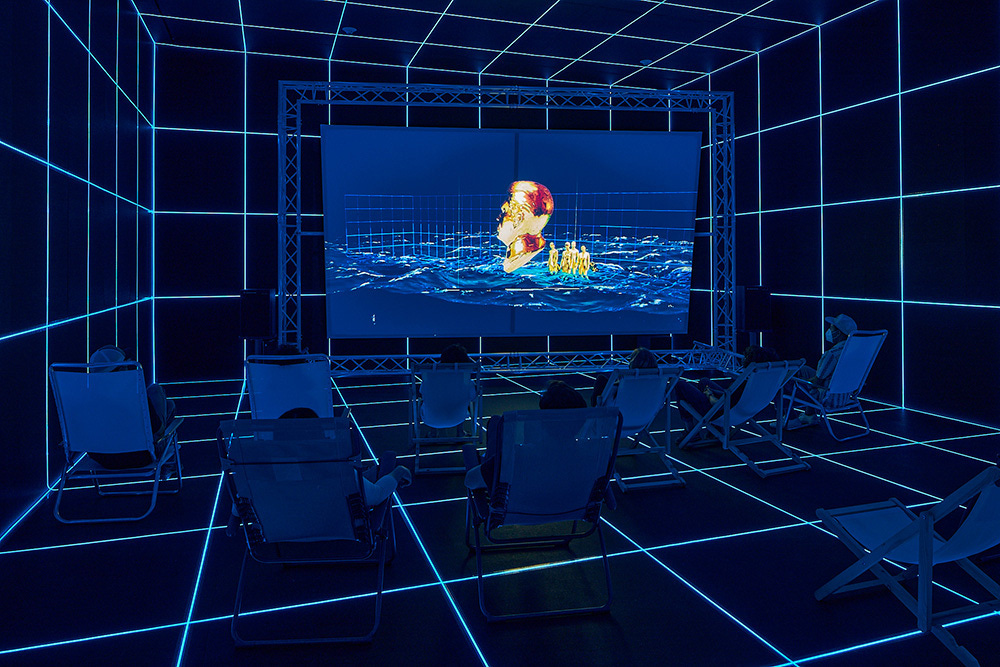
FAT
I stumbled into this way of working. I opened up the Unity game engine wanting to just play around with the digital camera to learn how it worked. I had just a cube in the scene, so that something was visible, and realized I could layer the cameras on top of each other. With multiple cameras drawing the same cube to the same screen I created a literal version of Cubist painting, which presented objects from multiple vantage points on the same single painting surface. And this effect was interesting to see with just a cube. I then started developing it as a game, called CUBEISM, by making a series of levels with the constraint that each one could only have one cube and any number of cameras. Rather than worry about cohering these levels into one functioning system, with scripts being economically written to be flexible rather than repetitive, I let all of my experiments remain untouched after I initially created them. To put them together into one game I simply lined them up and had the game proceed from one level to the next by an unseen timer.
Video art installations are made knowing that the viewer won't walk into the room right at the beginning and leave right at the end like in a movie theater. As a videogame installation, you also have to account for the fact that the game will be running while nobody is playing, but they might still be looking at it. So this naturally led me to a game with progression but no goals, no winning, and no competition. Each level that happens adds another fold in the viewers mind, “Here's another thing this idea could be.” “Here's another surprising interaction I had with the computer.” I stayed inside the constructed framework of “one cube and multiple cameras” but let my fingers and desires lead the way. I didn't even sit down expecting to make a game, so there's no way I could know what it would look like in the end.
Since figuring out this way of making videogames I've learned to trust my initial gestures and do whatever seems interesting in the moment. If I go back and try to edit or solicit advice from others I just get confused, doubtful, and unsure of how to proceed. I often get feedback that my games look like tutorials or confusion on how it's a game at all. I don't think these critiques are wrong, just besides the point.
Recently I moved and joined a new gym, which included a free personal training session. After going through a series of basic exercises (with no explanations) I was read a lengthy report from the electrode machine that supposedly measures the composition of muscle and fat in your body. The trainer proceeded to explain the number of ways the machine was saying I was fat and needed to lose weight to achieve what it saw as the ideal body. I already knew both how inaccurate these machines are and that I am fat but was shocked at how long we lingered on these figures presented as scientific, impartial facts about my body and my assumed goals. He then asked if I wanted to sign up for more sessions.
Our feelings about videogames often take the same matter-of-fact attitude about what is ideal. To dislodge these ideas we have to think about what we value and strive for both in ourselves and in others. We need to listen to ourselves and acknowledge our bodies, both its beauty and its limitations. If we chase unrealistic ideas about what our bodies or our work could be in the future then it's difficult to appreciate where we are. We are always in the present. Follow your desires and find a process that gives you joy. Let your experiences accumulate. Share them with people. Build a body you love.
